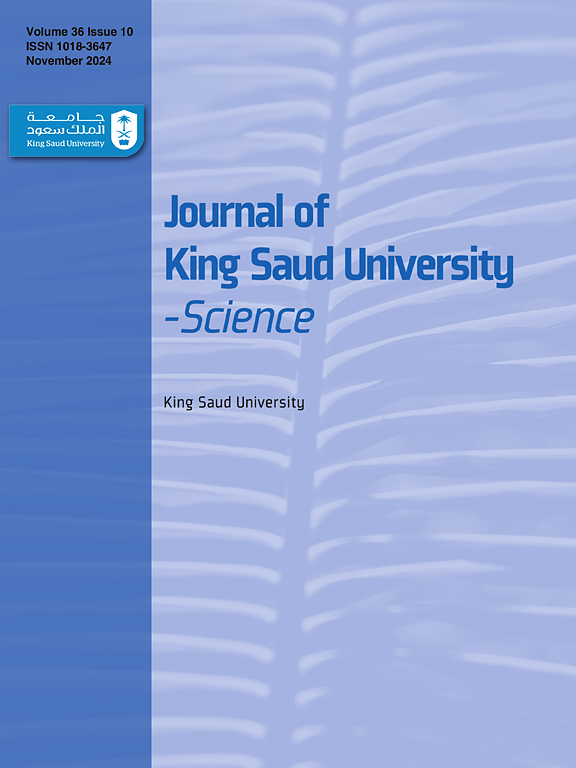空气污染物颗粒物(PM2.5、PM10)、二氧化氮(NO2)、二氧化硫(SO2)、挥发性有机化合物(VOC)、地面臭氧(O3)与高血压之间的关系
IF 3.6
3区 综合性期刊
Q1 MULTIDISCIPLINARY SCIENCES
引用次数: 0
摘要
背景空气污染会导致多种疾病和过早死亡。本研究探讨了空气污染物颗粒物(PM2.5、PM10)、二氧化氮(NO2)、二氧化硫(SO2)、挥发性有机化合物(VOC)、地面臭氧(O3)与高血压(HTN)之间的关系。方法空气污染物和高血压的数据来自 "Pub Med、Web of Science、Scopus 和 Google Scholar"。我们使用关键字 "暴露(空气污染物)"和 "结果(高血压)"对数据进行了搜索。初步筛选出 108 篇文献,在对摘要和完整文章进行研究后,选出 28 项研究进行分析和讨论。结果环境污染物 PM2.5 暴露增加(OR = 1.05; 95 % CI:1.02, 1.08; p < 0.01); PM10 (OR = 1.25; 95 % CI: 1.04, 1.49; p = 0.02); NO2 (OR = 1.12; 95 % CI: 1.01, 1.25; p = 0.04); SO2 (OR = 1.17; 95 % CI:1.04, 1.31; p = 0.02); VOCs (OR = 2.45;95 % CI:1.36, 4,41; p = 0.01)与高血压发病率增加显著相关。结论空气污染物 PM2.5、PM10、二氧化氮、二氧化硫和挥发性有机化合物会显著增加高血压的发病风险。减少环境污染物的政策是降低全球人口心血管风险的动态规划方法。排放控制、清洁能源推广和交通政策等直接影响空气污染水平的策略将对心血管健康产生直接影响,并降低全球人口高血压的总体发病率。此外,促进心血管健康的公共卫生运动应包括有关空气污染暴露风险的教育。本文章由计算机程序翻译,如有差异,请以英文原文为准。
Association between air pollutants particulate matter (PM2.5, PM10), nitrogen dioxide (NO2), sulfur dioxide (SO2), volatile organic compounds (VOCs), ground-level ozone (O3) and hypertension
Background
Air pollution causes numerous debilitating diseases and premature deaths. This study explores the relationship between air pollutants particulate matter (PM2.5, PM10), nitrogen dioxide (NO2), sulfur dioxide (SO2), volatile organic compounds (VOC), ground-level ozone (O3) and hypertension (HTN).
Methods
The air pollutants and hypertension data were recorded from the “Pub Med, Web of Science, Scopus, and Google Scholar.” We searched the data using the keywords on exposure (air pollutants) and outcome (hypertension). Primarily, 108 documents were selected, and after studying the summaries and complete articles, 28 studies were selected for analysis and discussion. The impact of air pollutants on hypertension was investigated through a compilation of 28 studies, from multiple countries, encompassing a total sample size of 2,540,441.
Results
Increased exposure to environmental pollutants PM2.5 (OR = 1.05; 95 % CI:1.02, 1.08; p < 0.01); PM10 (OR = 1.25; 95 % CI: 1.04, 1.49; p = 0.02); NO2 (OR = 1.12; 95 % CI: 1.01, 1.25; p = 0.04); SO2 (OR = 1.17; 95 % CI:1.04, 1.31; p = 0.02); and VOCs (OR = 2.45;95 % CI:1.36, 4,41; p = 0.01) were significantly associated with increased incidence of HTN. However, O3 exposure was positive but not significantly linked with an elevated risk of HTN (OR = 1.35; 95 % CI: 0.67, 2,72; p = 0.27).
Conclusions
Air pollutants PM2.5, PM10, NO2, SO2, and VOC positively and significantly enhanced the risk of hypertension. Environmental pollutants-reducing policies could be a dynamic planned approach to lessen cardiovascular risks in global populations. The strategies such as emission controls, promotion of clean energy sources, and transportation policies, that directly impact air pollution levels will have direct implications on cardiovascular health and decrease the overall occurrence of hypertension in the global population. Additionally, public health campaigns to promote cardiovascular health should incorporate education about the risk of air pollution exposure.
求助全文
通过发布文献求助,成功后即可免费获取论文全文。
去求助
来源期刊

Journal of King Saud University - Science
Multidisciplinary-Multidisciplinary
CiteScore
7.20
自引率
2.60%
发文量
642
审稿时长
49 days
期刊介绍:
Journal of King Saud University – Science is an official refereed publication of King Saud University and the publishing services is provided by Elsevier. It publishes peer-reviewed research articles in the fields of physics, astronomy, mathematics, statistics, chemistry, biochemistry, earth sciences, life and environmental sciences on the basis of scientific originality and interdisciplinary interest. It is devoted primarily to research papers but short communications, reviews and book reviews are also included. The editorial board and associated editors, composed of prominent scientists from around the world, are representative of the disciplines covered by the journal.
 求助内容:
求助内容: 应助结果提醒方式:
应助结果提醒方式:


